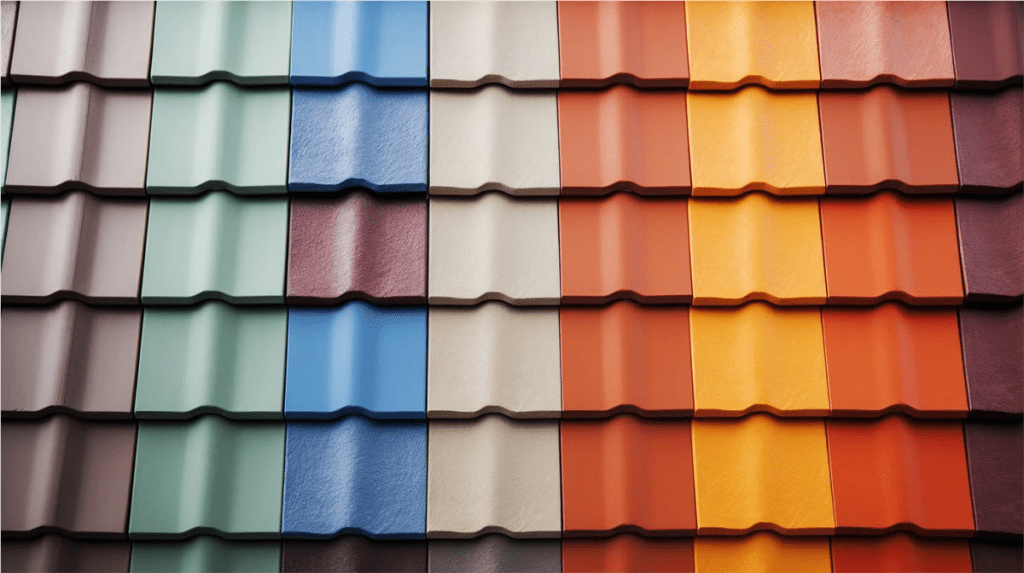When considering ways to reduce your energy bills and make your home more eco-friendly, one of the most impactful changes you can make is choosing the right roofing material and color. The roof of your home plays a significant role in energy efficiency, affecting both heating and cooling costs. This article explores the most energy efficient roof material and color, helping you make an informed decision that balances aesthetics, functionality, and sustainability.

Understanding the Importance of Energy Efficient Roofing
An energy efficient roof can significantly reduce the amount of energy needed to heat and cool your home. The right combination of roofing material and color can reflect more sunlight and absorb less heat, leading to lower indoor temperatures in the summer and reduced energy use overall.
Most Energy Efficient Roof Material and Color Options
There are several materials and colors known for their energy efficiency. Here, we explore the top choices and their benefits.
Energy Efficient Roofing Materials
1. Metal Roofing
- Benefits: Metal roofs are highly reflective, making them excellent at deflecting solar radiation. This reduces heat absorption and keeps your home cooler.
- Longevity: Metal roofs can last up to 50 years or more, offering long-term savings on replacement costs.
- Recyclability: Metal is fully recyclable, making it an environmentally friendly option.
Read too: Is It Reasonable to Ask the Seller to Replace the Roof?
2. Clay and Concrete Tiles
- Benefits: These materials are highly durable and have natural insulating properties. They are also available in lighter colors, which enhance their reflectivity.
- Aesthetic Appeal: Available in a variety of styles and colors, they can complement many architectural designs.
- Longevity: Clay and concrete tiles can last up to 100 years with proper maintenance.
3. Asphalt Shingles with Cool Roof Technology
- Benefits: Modern asphalt shingles are available with reflective coatings that increase their energy efficiency. They are cost-effective and easy to install.
- Variety: Available in numerous colors and styles, they can fit any aesthetic preference.
- Maintenance: Requires regular maintenance to ensure longevity and performance.
4. Slate
- Benefits: Slate is a natural stone that offers excellent durability and natural insulating properties. It is also available in lighter shades which improve its reflectivity.
- Durability: Slate roofs can last over a century with minimal maintenance.
- Aesthetic: Adds a high-end, timeless look to any home.
Most Energy Efficient Roof Colors
Color plays a crucial role in the energy efficiency of your roof. The color of your roofing material can impact how much heat is absorbed or reflected.
1. White and Light Colors
- Benefits: Light colors such as white, light gray, and beige are the most reflective, reducing heat absorption significantly. This keeps your home cooler in the summer and reduces cooling costs.
- Application: Suitable for various materials, including metal, tiles, and asphalt shingles.
2. Cool Roof Colors
- Benefits: Cool roof colors are specially formulated to reflect more sunlight than standard colors. These include reflective pigments that enhance the energy efficiency of darker colors.
- Variety: Available in a wide range of colors to match any design preference while still offering energy efficiency.
Factors to Consider When Choosing the Most Energy Efficient Roof Material and Color
1. Climate
- Hot Climates: In regions with hot summers, prioritize materials and colors that reflect the sun’s heat, such as metal roofs with reflective coatings or light-colored tiles.
- Cold Climates: In cooler climates, darker roofs can help absorb heat during the winter, reducing heating costs.
2. Local Building Codes and Incentives
- Regulations: Check local building codes for any restrictions or requirements related to roofing materials and colors.
- Incentives: Look for energy efficiency incentives or rebates offered by local governments or utility companies for installing energy-efficient roofs.
3. Aesthetic Preferences
- Architectural Style: Choose a roofing material and color that complements the architectural style of your home.
- Neighborhood Aesthetics: Consider the overall look of your neighborhood to ensure your roof choice blends well with surrounding homes.
4. Budget
- Initial Costs: Consider the upfront cost of materials and installation.
- Long-Term Savings: Evaluate the long-term energy savings and potential maintenance costs associated with each roofing option.
Installation and Maintenance Tips
Professional Installation
- Ensure your roof is installed by a licensed and experienced contractor to maximize its energy efficiency and longevity.
Regular Maintenance
- Perform regular inspections and maintenance to keep your roof in optimal condition. Clean debris, check for damage, and address any issues promptly.
Conclusion
Choosing the most energy efficient roof material and color can have a significant impact on your home’s energy consumption and overall comfort. By selecting the right combination of materials and colors, you can reduce your energy bills, increase your home’s value, and contribute to a more sustainable environment. Consider your climate, budget, and aesthetic preferences when making your decision, and consult with a professional to ensure you achieve the best results.



Leave a Reply